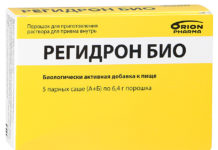Laminaria is brown algae that can be safely used in your diet. The second name of the product - sea kale, its benefits, medicinal properties and the harm that it can cause with uncontrolled use, have long been known. The plant contains a large amount of fiber, iodine, vitamins, iron and other useful substances.
It is this composition, rich in various elements, that makes seaweed salad an indispensable dish on the dining table. In addition, kelp is used in cosmetology and medicine, but care should be taken, since even such a harmless product has contraindications.
Material Content:
Useful components of kelp
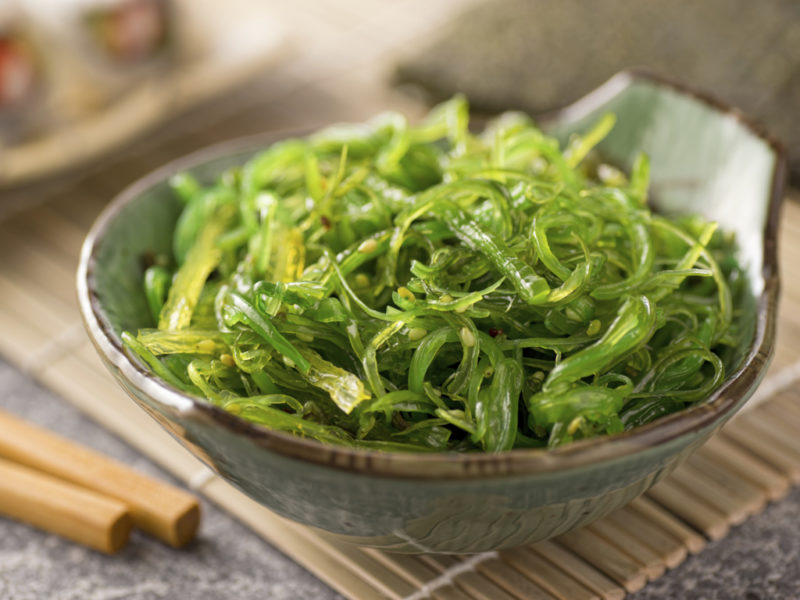
Due to its diverse composition, seaweed is able to positively affect various organs and systems of a person:
- Trace elements (phosphorus, potassium, iodine, ferum, sodium, magnesium) - the iodine contained in kelp helps the human thyroid gland function correctly, iron prevents the development of anemia, sodium and potassium stabilize the acid-base balance, and also maintain water balance in the body.
- The whole spectrum of vitamins B, as well as vitamins A, E, C, D.
- Sterols - reduce the concentration of cholesterol in the blood, and also thin it, thereby preventing the formation of blood clots.
- Alginates are substances that act as enterosorbents. Once in the gastrointestinal tract, they draw in toxins, radionuclides and most pathogenic bacteria.
- Fiber - helps the digestive organs function properly, stabilizes the stool.
- Polysaccharides - positively affect metabolic processes.
- Fatty acids - prevent the development of atherosclerosis of blood vessels.
In addition, Japanese scientists have found that seaweed can inhibit the growth of cancerous formations in the mammary glands. For this, a specific substance is extracted from the roots of the plant, which is used in the fight against cancer.
Sea kale in the treatment of diseases
Edible algae is a product that contains a large concentration of iodine. Due to this, the use of kelp in food helps to eliminate harmful components from the body, especially substances such as lead and other heavy metals. Iodine affects the functioning of the thyroid gland - if brown alga is present in the human diet, he may not be afraid of pathologies of the endocrine system such as hypothyroidism or endemic goiter.
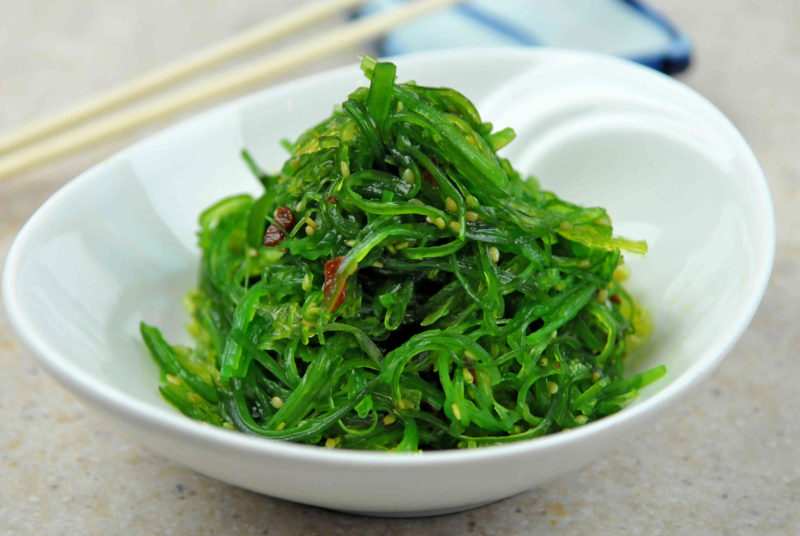
The healing properties of seaweed do not end there.
It can help get rid of diseases and pathological conditions such as:
- Breast Cancer
- Hypo - and vitamin deficiencies.
- Excess weight.
- Hypercholesterolemia.
- Stress, depression.
- Disorders of bowel movements (constipation, diarrhea).
- Decreased sexual cravings (libido).
In addition, kelp stimulates the immune system, cleanses the human body and improves the state of memory, the ability to remember.
The use of kelp in cosmetology
The benefits of seaweed are not only its medicinal properties and the effect on the body from the inside.
The plant is actively used in cosmetology to rejuvenate and improve the appearance of the patient:
- Vitamin B6 and nicotinic acid positively affect the hair and nails - make them more durable, prevent hair loss.
- Ca supports the normal state of nails, the oral cavity and bones.
- Laminaria helps to get rid of problem areas on the skin - cellulite.
- It has a rejuvenating effect.
Beauticians have long figured out how sea kale is useful, and they actively use this knowledge to make people more beautiful. Here are some recipes:
Orange Peel Wraps
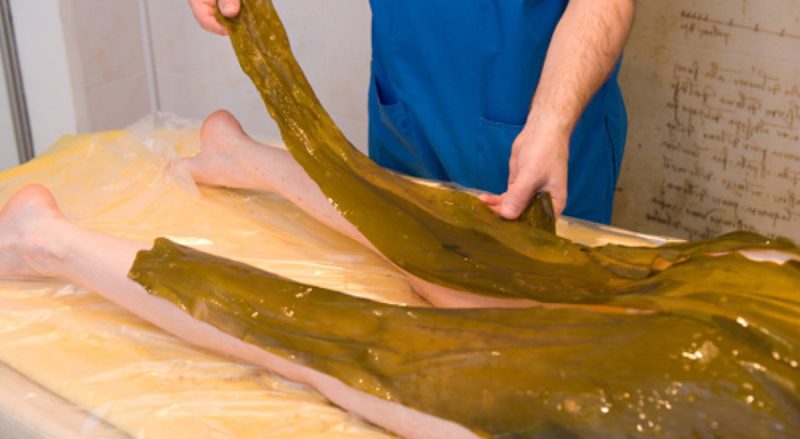
Two tablespoons of dried kelp pour a glass of boiling water, let it brew. When the mixture has cooled, add freshly squeezed juice from half a lemon and 20 drops of camphor oil. Mix everything and apply to the skin affected by cellulite, wrap tightly with a film. Then you need to lie under a warm blanket. The duration of the procedure should not exceed 60 minutes, and it can be repeated no more than twice a week.
Anti-aging mask
The required amount of dried seaweed (depending on the size of the area on which the mask will be applied) is filled with cool, but not icy, water. Wait until the plant swells, then get it out and squeeze gently. Cleanse the skin of dirt and apply kelp to the selected area, after half an hour, carefully remove the mask and rinse the skin with warm water.
Hair Mask
Pour a large spoonful of dried kelp leaves into a glass of boiling water, wait a couple of minutes, and then add 4-5 tablespoons of burdock oil to the mixture. The mask should be rubbed into the roots and distributed over the entire length of the hair. After that, wrap in a towel and wait about half an hour, then rinse with water without using shampoo.
People's advice:badger cough fat for children and adults
How to eat kelp
Excessive uncontrolled consumption of kelp can lead to an excess of iodine in the body, the development of furunculosis and osteoporosis. In severe cases, symptoms of iodism can occur - poisoning with iodine-containing substances.
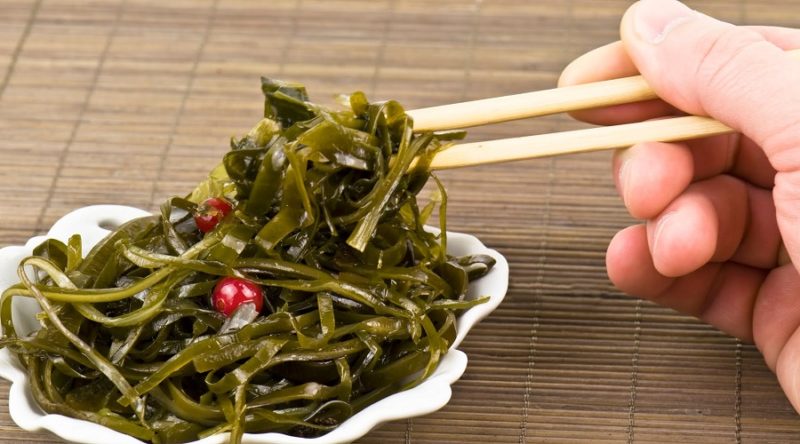
In order not to harm the body, you need to eat seaweed correctly. Its amount in the diet should not exceed two teaspoons of dry leaves per day. But if algae is rarely consumed, then nothing terrible will happen with a single dose excess.
It is also undesirable to buy canned kelp, since harmful additives are used during its preparation.The best way would be to purchase dried seaweed, which can be found in any pharmacy.
Is it possible to eat kelp during pregnancy
When carrying a child, eating seaweed is highly undesirable
This is due to the high content of iodine in it, which is able to easily penetrate the placenta and affect the baby. An excess of this substance in the body during pregnancy leads to unauthorized abortions, as well as to the appearance of various defects in the fetus. In addition, iodine accumulates in the ducts of the mammary glands and then can get into the baby with milk, causing the baby to be poisoned.
But iodine deficiency is as dangerous as an overabundance, so during pregnancy you need to carefully monitor the concentration of this element in the body.
Contraindications to the use of seaweed
Most of the contraindications to the use of kelp are associated with a high concentration of iodine in the marine product. Therefore, first of all, algae can not be eaten by people with intolerance to this substance.

In addition, it is forbidden to use seaweed for such diseases:
- Jade;
- Acute or chronic renal failure;
- Gastrointestinal tract diseases (ulcers, gastritis, colitis);
- Increased secretion of hormones by the thyroid gland (hyperthyroidism);
- Furunculosis;
- Allergic manifestations in the form of urticaria or Quincke's edema;
- Acne;
- Tuberculous lesion of any localization;
- The presence of hemorrhoids.
Although sea kale is not a medicine, before you first introduce it into the diet, it is advisable to consult a doctor and find out about the possible presence of diseases during which it is better not to use kelp.
Laminaria and diet therapy
Edible algae is actively used as one of the main components of the diet for excess weight. This is due to the fact that, getting into the gastrointestinal tract, it swells, increases in size and fills the stomach, thereby reducing the feeling of hunger. In addition, the plant is able to draw in excess water, toxins and salts, which also contributes to weight loss.

For a better result, you need to eat dried or, if possible, fresh seaweed. Since a canned product does not remove excess pounds so effectively.
Since kelp has a large list of contraindications for use, before it is included in the diet, it is better to consult a doctor or dietitian.







